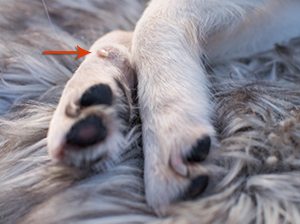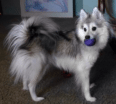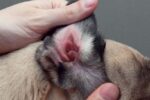What are Dew Claws? Does my Dog Need Them?
You may have noticed a tiny fifth digit on the side of your dog’s paws—small, yet hard to miss, these are his dew claws. If you’re wondering what they are, you can view them as your pet’s non-functional thumbs. While they’re often present in the front paws, a number of dogs may also have them on their hind paws, albeit less commonly. But what kind of purpose do these claws serve, except for getting caught on the carpet?
You’ve probably heard of dew claw removal—a procedure in which a veterinarian surgically removes the structure from the paw. When you think about it, removing a meaningless structure seems to make sense, doesn’t it? The fact is, many canines do get their dew claws removed, but are the reasons behind the decision justified? Or are they merely done for cosmetic purposes? To answer these questions, we’ll have to delve into the topic of doggy dew claws a little more deeply.
What are dew claws?

Dew claws are attached to the foot by small amounts of tissue and bone (although less so in hind dew claws) and make no contact with the ground upon walking. While all dogs are born with dew claws on their front legs, it is not uncommon for some dogs to not have them on their rear legs.
Do they really serve no purpose?
Although your dog may never be able to use his dew claw to send text messages, it’s important to establish the fact that they are in fact, live tissue. While these canine digits have no specific function and can never be compared in functionality to the thumbs of a human, they can help with the gripping and holding of objects.
If you’re a doggy parent, then you’ve probably seen your pet trying to hold and prop his bone up while chewing it—they help to provide traction so that the yummy treat doesn’t fall over. Considering the fact that dew claws are extra appendages, it also makes sense that they can help a dog in climbing or scratching itches.
Should they be removed surgically?

If the dew claw is not properly attached to the foot (eg. if it tends to dangle outwards), it may become a safety hazard for your pet as it can get caught or in the worst case scenario, be ripped off. If you are wondering whether or not your dog’s dew claws should be removed, it’s highly recommended for you to consult your dog’s veterinarian before making a decision.
However having said that, there are certain instances in which the removal of dew claws are more commonly seen—an example would be in show dogs.
When should my dog’s dew claws removed?
Dew claws are most commonly removed during your dog’s spay/neuter surgery—since he’d already be under anesthesia. The option of having the dew claws removed in a separate surgery is typically seen to be less ideal as it requires your dog to undergo a second round of anesthesia (which is always no fun for your pet).
Some dog breeders also opt to have the dew claws removed when the puppies are still young (eg. first few weeks of life) since the process will be much simpler and not require stitches.
Caring for your dog’s dew claws
Remember, your dog’s dew claws are not dead appendages—this means that they still require proper care. If your pet accidentally injures his protruding digits, he will require medical attention. Also, along with the rest of your dog’s nails, the nails on the dew claws will need to be clipped regularly to prevent it from being caught, or growing back into the skin.

















